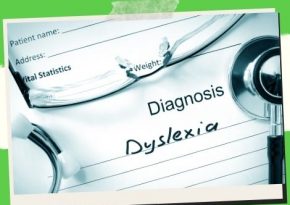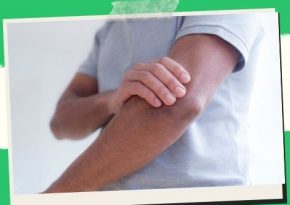
Adolescent Female Menstrual Disorders
Adolescence is a time when the body undergoes rapid changes and teenagers’ minds are filled with numerous concerns. They are unable to cope with the changes for two reasons: first, they are unable to cope with the changes, and second, the changes bring with them issues. In girls, the most difficult issues are related to menstruation. There are a variety of menstrual disorders that may necessitate the attention of a physician or another healthcare expert. Premenstrual syndrome, dysmenorrhea, and amenorrhea are the most prevalent menstrual disorders.
Females have a variety of unpleasant sensations before the commencement of menses, which last anywhere from a few hours to a few days. However, some of them can be highly intense and disrupt a person’s usual functioning. Premenstrual syndrome is the umbrella term for these symptoms. The symptoms usually stop as the menses start, but for some women, they can linger long after the menstrual periods are over. Eighty-five percent of women suffer premenstrual syndrome symptoms at some point during their lives. Nearly 40% of people have so severe symptoms that it interferes with their everyday activities, and 10 percent are completely handicapped.
Neurologic and vascular difficulties, psychological issues, gastrointestinal symptoms, fluid retention, vision problems, and respiratory problems are only a few of the premenstrual syndrome symptoms. Variations in progesterone and estrogen levels, hypoglycemia, hyperprolactinemia, psychogenic factors, alterations in carbohydrate metabolism, excessive aldosterone, progesterone allergy, and water retention by the kidneys are all causes of premenstrual syndrome. The good news is that premenstrual syndrome can be avoided by exercising on a regular basis, eating a healthy diet, and getting enough sleep.
Dysmenorrhea is characterized by severe menstrual cramps and agony. Dysmenorrhea is classified as either primary or secondary dysmenorrhea, depending on the severity. Primary dysmenorrhea symptoms appear from the start of menstrual periods and last for the rest of one’s life. Severe menstrual cramping is caused by abnormal uterine contractions caused by a hormonal imbalance. Secondary dysmenorrhea appears in the later stages of the disease. Primary and secondary dysmenorrhea have distinct causes. Medical problems such as endometriosis, uterine fibroids, pelvic inflammatory disease, tumors, infections, and improper pregnancy can all cause secondary dysmenorrhea.
Lower abdominal cramping and pain, lower back pain, nausea, diarrhea, vomiting, fatigue, fainting, weakness, and headaches are all symptoms of dysmenorrhea. Females who are overweight, smoke, or begin menstruating before the age of eleven are more likely to have dysmenorrhea. Women who use alcohol throughout their menstrual period face increased agony. Following a thorough examination of the patient’s health, age, cause of dysmenorrhea, and severity of symptoms, the appropriate treatment will be suggested. Exercise, abdominal massage, a hot bath, vitamin supplements, and dietary changes can all aid in the treatment of dysmenorrhea.
Amenorrhea is a condition in which a woman misses her menses for more than three menstrual cycles in a row. Primary amenorrhea and secondary amenorrhea are two types of amenorrhea. The onset of menstrual periods causes primary amenorrhea. In this case, the adolescent may not have periods once she reaches puberty. Secondary amenorrhea is a condition in which periods become irregular over time rather than right away.
Ovulation abnormality, eating disorders, birth defects, anatomical abnormalities, malnutrition, anorexia, bulimia, pregnancy, over-exercising, thyroid disorder, obesity, and other medical conditions are among the many causes of amenorrhea. Ovulation abnormalities are one of the most common causes of missed or irregular periods. Menstruation must begin at least by the age of sixteen for an adolescent. Anatomical abnormalities, birth defects, and other medical conditions may be the cause if this is not the case. Adolescents who participate in sports and are athletic have a lower body fat content, which leads to menstrual irregularities. The body is incapable of sustaining pregnancy even when malnourished. As a result, the reproductive system and menses are shut down by the body. Obese women have irregular menses because extra fat cells in their bodies interfere with ovulation. Dietary changes, ovulation inhibitors, and hormone therapy are all used to treat amenorrhea.
Save/Share this story with QR CODE
Disclaimer
This article is for informational purposes only and does not constitute endorsement of any specific technologies or methodologies and financial advice or endorsement of any specific products or services.
 Need to get in touch?
Need to get in touch?

We appreciate your reading. 
1.) 

Your DONATION will be used to fund and maintain NEXTGENDAY.com
Subscribers in the Philippines can make donations to mobile number 0917 906 3081, thru GCash.
3.) 
4.) 
AFFILIATE PARTNERS

World Class Nutritional Supplements - Buy Highest Quality Products, Purest Most Healthy Ingredients, Direct to your Door! Up to 90% OFF.
Join LiveGood Today - A company created to satisfy the world's most demanding leaders and entrepreneurs, with the best compensation plan today.

 Business, Finance & Technology
Business, Finance & Technology

 Business Technology, Finance Technology & Information Technology
Business Technology, Finance Technology & Information Technology





